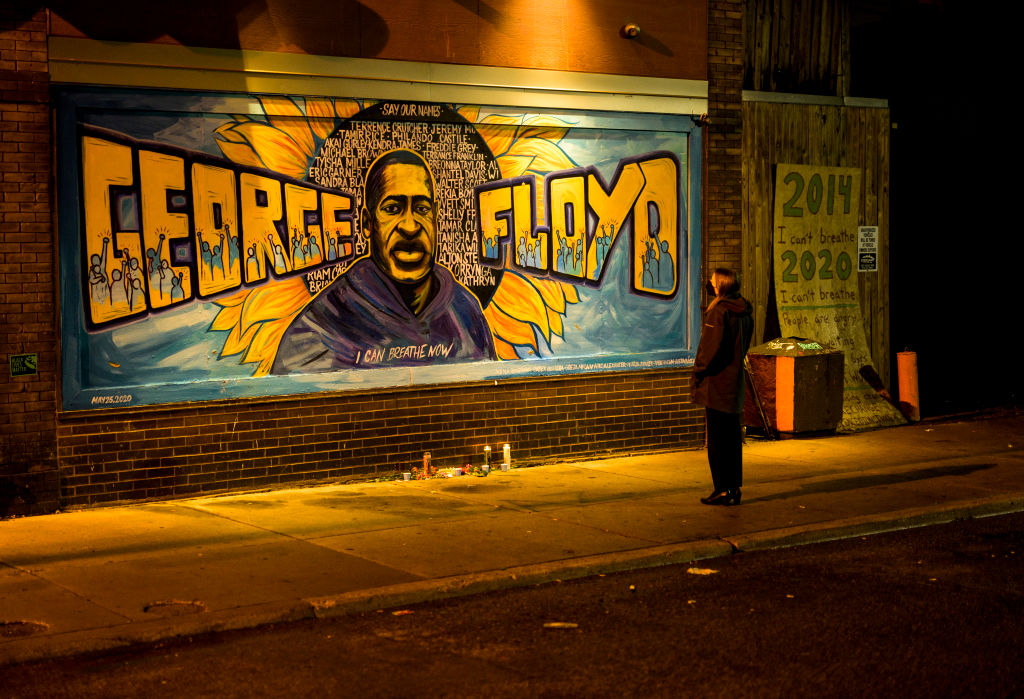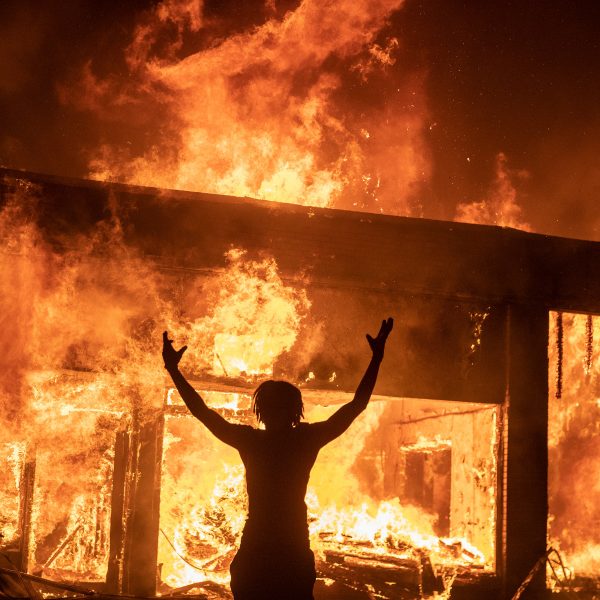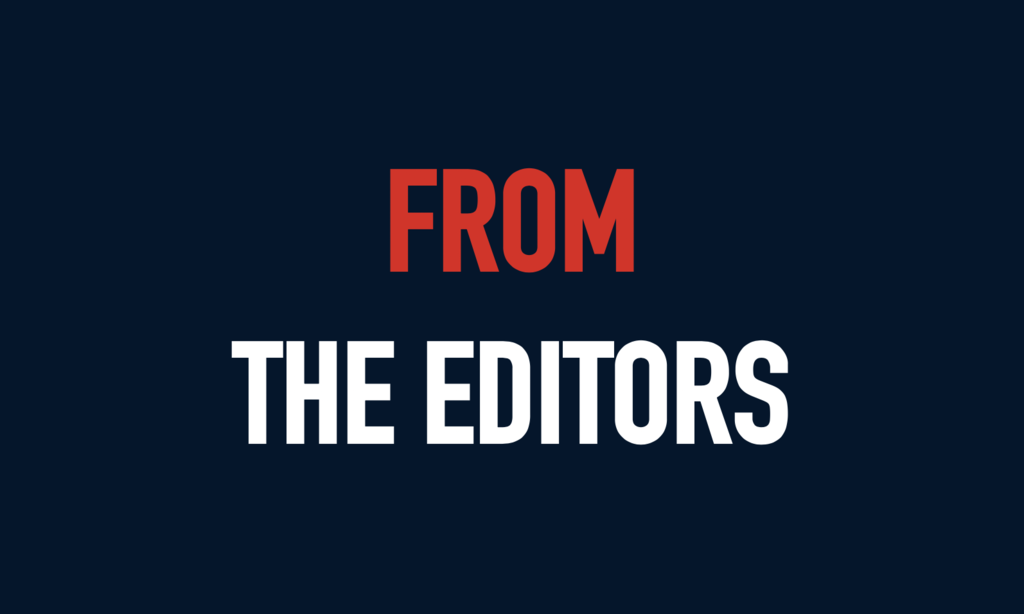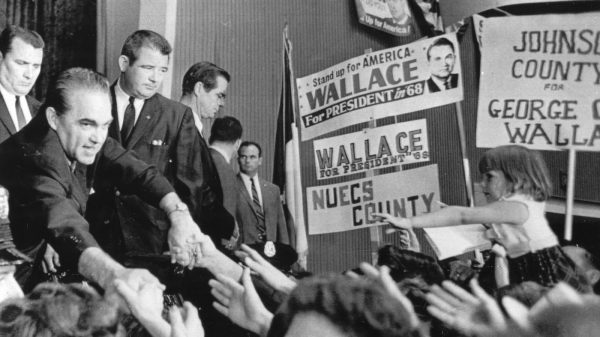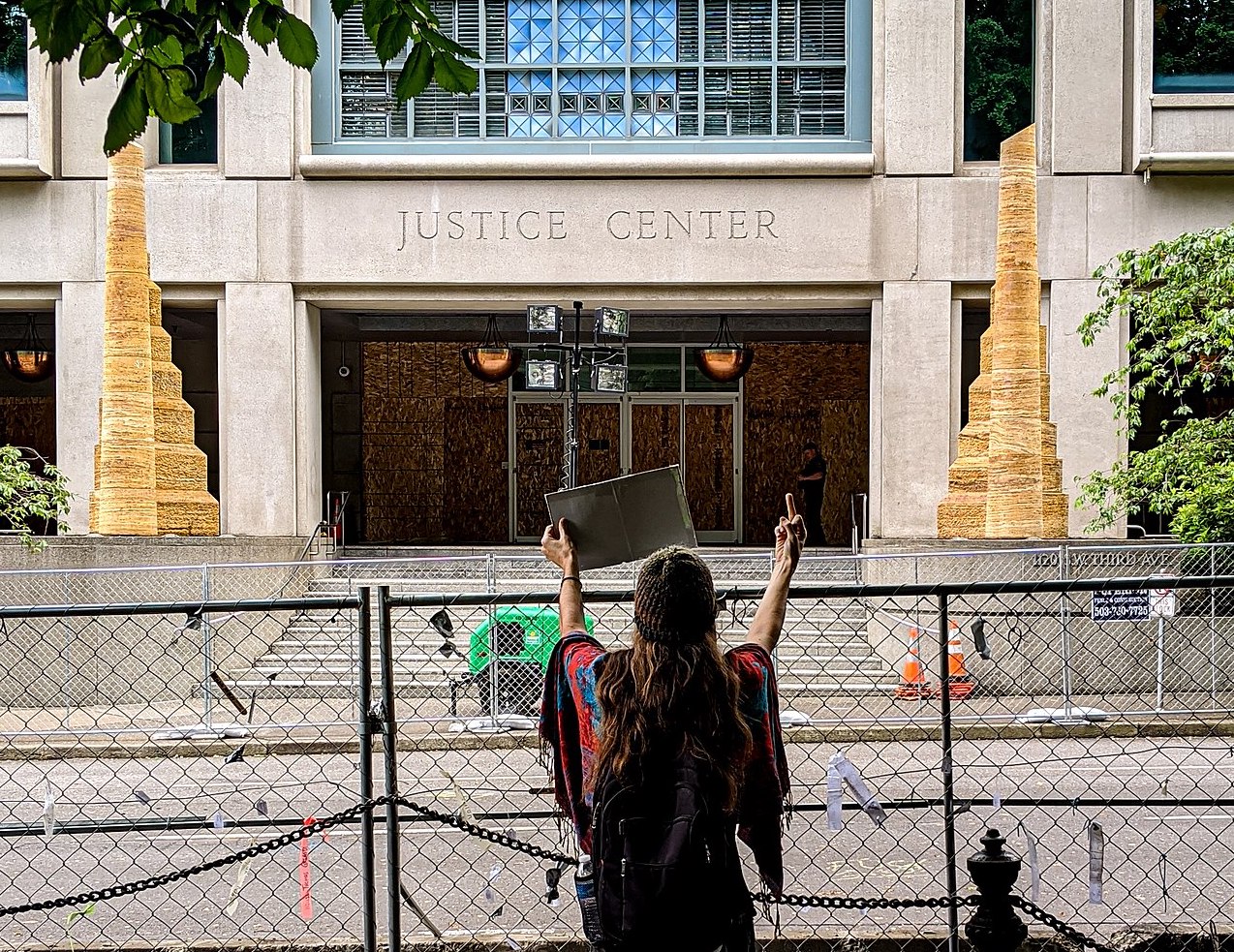We knew it all along that Officer Chauvin did not murder George Floyd.
Hialeah Blues
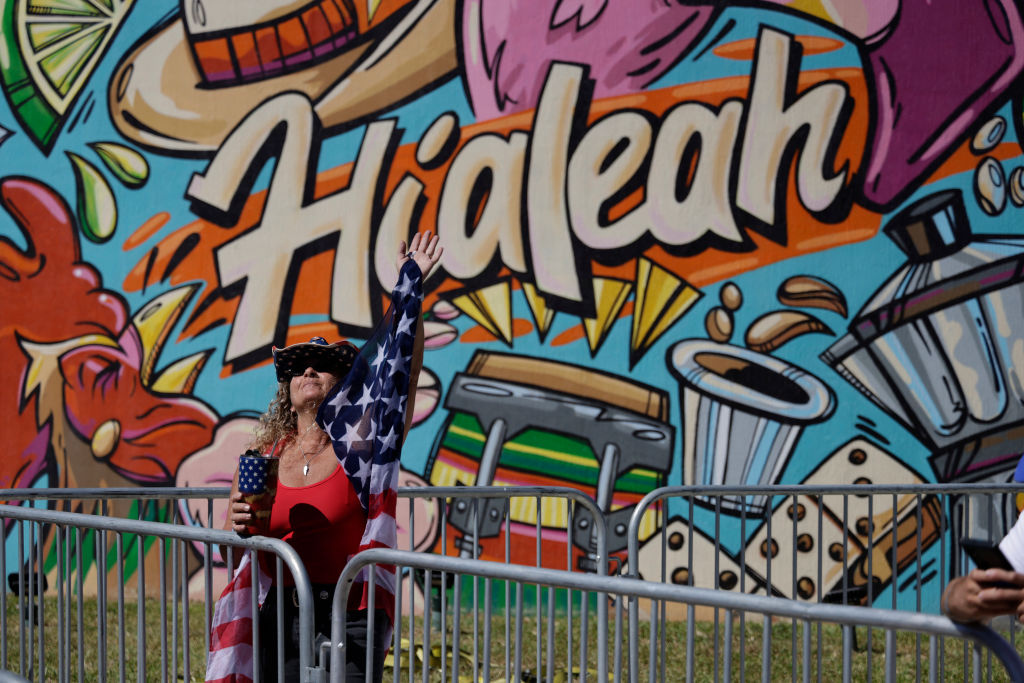
How the Biden border crisis may upend urban politics.
The torrent of illegal migration brazenly facilitated by the Biden Administration since 2021 will have fateful consequences for the United States. The flood shows no sign of abating and is mutating with new migrant streams coming online beyond our hemisphere. In addition to traditional migration from Latin America, trafficking schemes are channeling thousands from Africa to Central America. Others, taking advantage of an historic opportunity to storm the open gates, are coming from Asia and the Middle East.
While the impact of these new arrivals will play out over decades, some recent reactions have been striking. Big city Democratic mayors in New York and Chicago have demanded billions from Washington to defray the costs of tens of thousands streaming in. The mayors have stopped short from turning against illegal immigration per se, but other locals haven’t been so reticent. In Chicago, black Democrats are suing the city over the use of funds to support the new migrants. A video uploaded on X/Twitter showed a black Chicago native yelling at migrants to “Go home!” while one of the Hispanic migrant activists taunted her in return, saying, “No more money for you! You’re lazy!”
The tension is not limited to new arrivals and is not recent. In 2022, turmoil racked the Los Angeles City Council, all Democrats, over leaked audio of Mexican-American council members making crude comments about blacks. More recently, in January 2024, a Minneapolis high school was compelled to cancel classes after a “race-fueled brawl” between African Americans and students of Somali origin. And tensions in the Middle East have recently led to a wave of antisemitic activity in the United States, often initiated by people of Middle Eastern or black origin.
Ethnic tension over newly-arrived foreigners is nothing new in this republic. Benjamin Franklin complained about Germans and Teddy Roosevelt about Irishmen. The largest mass lynching in American history was of Sicilians in New Orleans. A full quarter to a third of the Union Army in the American Civil War were foreign-born.
But while America has seen immigrants for all of its history, and reached heights in the early twentieth century only recently surpassed in terms of the percentage of foreign-born residents in the country, the current wave is unprecedented in the experience of most people alive today. These mayors today asking for money from Washington and trying to maneuver between the needs of citizens and new arrivals may not know it, but they are living history. As they whistle past the graveyard, they are participants in the demographic drama of power likely draining away from one ethnic group to another. It may turn out that the much-derided Great Replacement was real, and only time will tell when the last black or Anglo mayor of Los Angeles or Chicago or New York will pass from the scene.
I actually saw this demographic change happen in one generation in South Florida. Indeed, I was a part of it, though the events I am describing either happened when I was child or after I had left Dade County for service in the U.S. Army, followed by college.
To begin with, I grew up in a town called Hialeah. If Americans know anything at all about this blue-collar town, the second largest in Miami-Dade County, it is that it was once the site of a famous thoroughbred horse racing track, from 1925 to 2001. Hialeah Park Race Track was the site of the Flamingo Stakes, nine winners of which went on to win the Kentucky Derby.
Almost as much an institution as the race track was Henry A. Milander, “the workingman’s mayor,” a Pennsylvania butcher who arrived in South Florida just around the time that the city of Hialeah was incorporated in 1925 in what was a subtropical prairie west of Miami. Milander opened Milander’s Meat Market on 215 Palm Avenue in 1932 and continued to operate it while serving as Hialeah’s mayor from 1942 to 1944 and then from 1947 until his death in 1974. Milander’s butcher shop had a sign that read “Cows may come and cows may go but the bull around here goes on forever.” After his death, the Meat Market would eventually become Milander’s Carniceria under new ownership (closing in 1983).
The pint-sized Milander, priding himself on knowing and helping his constituents, ran Hialeah very much like a mom-and-pop enterprise. He was a little man who was “for the little man.” One local described him as “a no-nonsense mayor,” one of those who would “come outside, grab a lawn chair and listen.” Milander was, like some other effective local retail politicians of his era, in and out of legal trouble throughout much his lengthy political career, but he has a marble bust outside of Hialeah’s City Hall. Milander Park is the city’s largest recreation area, with a 10,000-seat high school football stadium.
While Hialeah’s racetrack attracted celebrities and the powerful, the town that developed around it was very much a working-class place. As such it became a magnet for Cuban exiles pouring into South Florida after the Cuban Revolution of 1959. Before the arrival of the Cubans, a lot of the transplants in Hialeah had Southern roots in Georgia and the Carolinas (Milander proudly displayed an autographed photograph of Alabama Governor George C. Wallace in his office).
Miami Herald columnist Charles Whited painted a vivid picture of “old” Hialeah when Milander passed, “there’s a lot of rural America in that big town. There are a lot of white socks and Blue Ribbon beer in Hialeah.” In 1974, Whited described Hialeah as “heavy on working folks, pickup trucks with gunracks in the windows, bumper stickers that say ‘Love It or Leave It.’ Neighborhoods tend to be close, friendships old.”
While Milander was a legend, the mayor I remember best was his replacement, Dale G. Bennett, the last Anglo mayor of Hialeah (1974-1981). Bennett was a Hialeah native son and graduate of Hialeah High, “a young optometrist with curly red hair and a soft drawl” who had been on the city council since 1971 and had hoped to challenge Milander in the next election. In retrospect a conscientious, hardworking public servant, his would be a stormy tenure. Not having the Milander Machine behind him, he not only had to deal with an obstructionist city council, dubbed the “ferocious five,” but also the fallout of rapid demographic change. Unlike the migrants making their way to Chicago and New York today, the Cuban exiles arriving then were all legal, as spelled out in the Cuban Adjustment Act of 1966.
“Big Red” Bennett tried his best despite some missteps. In 1974, Bennett told the Miami Herald that Cubans wouldn’t become U.S. citizens because they would lose refugee aid payments, a remark that was impolitic and inaccurate. A sillier incident took place a few years later when Bennett—who spoke no Spanish—infuriated Cuban exiles by inadvertently giving the keys to the city to a visiting Cuban Communist official. Bennett claimed that he had done so as a favor to the head of the local Latin Chamber of Commerce which had given a party for the official.
On the plus side, Bennett saved an ailing Hialeah Park Race Track by engineering a sale to a New Jersey developer in order to keep it open. A Miami Herald piece from 1980 documented Bennett refusing to be dragged into a campaign seeking to ban cockfighting, popular among Hispanics. He was quoted as saying that “I’m not for it or against,” while noting that cockfighting was legal as long as there was no gambling involved (it would be banned in Florida in 1986). The previous year, noisy Cuban protestors supporting Bennett crashed a city council meeting chaired by Bill Hodges, a Bennett opponent. Hodges sought to take on the crowd, sneering that “you may do this in the country you came from but not here. In this country, we operate with law and order.” The crowd then exploded in anger, yelling, “We are Americans!” and “We don’t want little boys here running our city!” Of the “ferocious five” council members squabbling with Bennett only one, Raul Martinez, was Hispanic, though by that time, more than 60 percent of the city’s residents were Hispanic.
In the end, it wasn’t just Hispanic representation or fights with the city council that finished Bennett’s political career. Hialeah, like the rest of South Florida, was suffering from a crime wave caused by the Mariel Boatlift of 1980 and the beginning of the Florida “Cocaine Wars” of the eighties. In language similar to today’s mayors, Bennett complained that the federal government wasn’t doing enough to defray the cost of the newly arrived Marielitos.
With a Bennett campaign trailer that featured country music in a town that increasingly spoke Spanish, the times were changing. He came in third—by 94 votes—in a 1981 primary to former councilman Jack Weaver and councilman Raul Martinez. Martinez won the runoff and held the office of mayor for 24 years. What once had been the Milander Machine became the Martinez Machine, and like Milander, Martinez would be in and out of legal trouble but somehow survive.
With a population of 223,000, Hialeah today is one of the least diverse cities in America. According to the U.S. Census, 95.4 percent of its residents identify as Hispanic, and 74.1 percent are foreign-born. In 92.6 percent of local households a language other than English is spoken. But it is still very much a blue-collar working-class town. Milander, Bennett, and Martinez were all Democrats, and Obamacare was quite popular, but today there are twice as many registered Republicans as Democrats in Hialeah. The street in front of city hall is now called Trump Avenue; this was a unanimous decision by the mayor and council in November 2023.
I have no idea if Karen Bass’s Los Angeles or Brandon Johnson’s Chicago or Eric Adams’s New York City will be Hialeahized, but change will be coming nevertheless—demographic change followed by political change based on the numbers that are already here. But nothing is set in stone, and opposition to unlimited migration is finally galvanizing many Americans in 2024. A country that cannot control its own borders is not truly a sovereign country.
There is little doubt, however, that in Los Angeles Hispanic political power will eventually sweep out Anglo and black political elites. Houston and Phoenix (respectively, the fourth and fifth largest cities in the United States) are also approaching Hispanic majorities. This is a demographic trend in three large cities that predates the Biden immigration surge. The old urban machines and the old boys’ political networks will be transformed and repurposed. The latest arrivals are not yet legal and won’t be able (allegedly) to vote anytime soon, so it will likely take longer for their political effect to be felt than was the case in South Florida. But if not them, it will be their children, one generation away.
The American Mind presents a range of perspectives. Views are writers’ own and do not necessarily represent those of The Claremont Institute.
The American Mind is a publication of the Claremont Institute, a non-profit 501(c)(3) organization, dedicated to restoring the principles of the American Founding to their rightful, preeminent authority in our national life. Interested in supporting our work? Gifts to the Claremont Institute are tax-deductible.
They’re getting what they asked for—good and hard.
Wisconsin will be the new normal unless the Right puts its foot down.
Notes from the convention that wasn’t.
It's the most persistent hate group in human history.
Why can’t Democrat leaders see what we all see?

